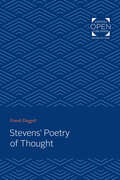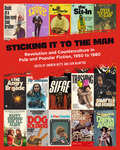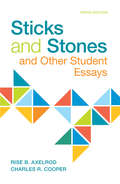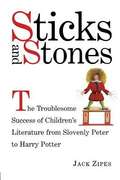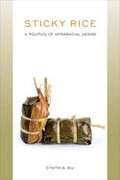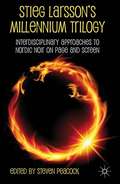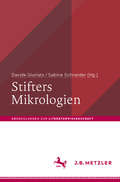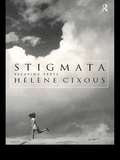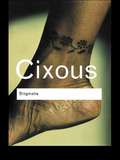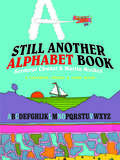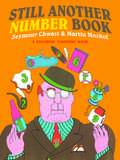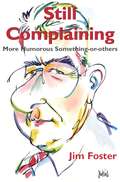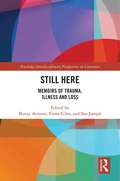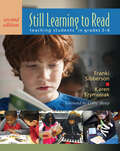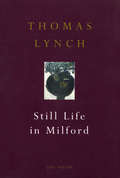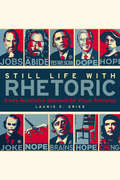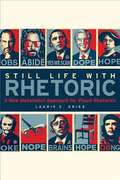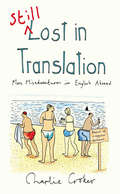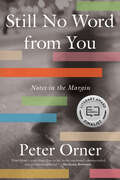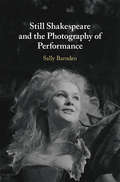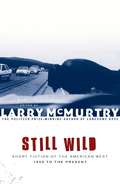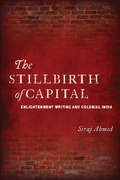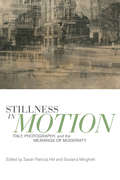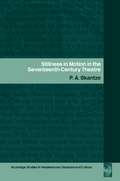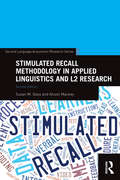- Table View
- List View
Stevens' Poetry of Thought
by Frank DoggettOriginally published in 1966. Stevens' Poetry of Thought is the first full-length study of Wallace Stevens as a thinker. With original insight, Mr. Doggett provides many detailed interpretations of individual poems in examining Steven's imagery. This is a pertinent treatment of Stevens' inherent affinity with the philosophic imagination of his time, showing how firmly this poet was linked through his images with the leading thinkers of the age just passed—especially Schopenhauer, Bergson, Santayana, Whitehead, William James, Jung, and Cassirer. The clear and perceptive reading of a great many of the poems in this book should illuminate the work of Stevens for all the readers who admire his language and wish for further insight into its significance. Beyond being a definitive exposition of Steven' poetry and a meaningful act of faith in the intellectual sophistication of Stevens, this is an exciting study of the human imagination which satisfies the need for distinction between poetry and philosophy while illuminating one by the other. Mr. Doggett demonstrates how the poetry of Stevens is a representative voice of the ideas of his age and illustrates Stevens own statement: "Poets and philosophers often think alike, as we shall see." Wallace Stevens is now recognized as one of the most important American poets of the twentieth century. His first volume of poems, Harmonium was published in 1923, and since then seven volumes of his work have appeared. He was awarded the Bollingen Prize in Poetry of the Yale University Library for 1949. In 1951 he won the National Book Award in Poetry for The Auroras of Autumn. The Collected Works of Wallace Stevens was awarded the Pulitzer Prize in Poetry in 1955. From 1916 to his death in 1955 he was associated with the Hartford Accident and Indemnity Company, of which he became vice-president in 1934.
Sticking It to the Man: Revolution and Counterculture in Pulp and Popular Fiction, 1950 to 1980
by Iain McIntyre Andrew NetteFrom civil rights and Black Power to the New Left and gay liberation, the 1960s and '70s saw a host of movements shake the status quo. The impact of feminism, anticolonial struggles, wildcat industrial strikes, and antiwar agitation were all felt globally. With social strictures and political structures challenged at every level, pulp and popular fiction could hardly remain unaffected. Feminist, gay, lesbian, black, and other previously marginalized authors broke into crime, thrillers, erotica, and other paperback genres previously dominated by conservative, straight, white males. For their part, pulp hacks struck back with bizarre takes on the revolutionary times, creating fiction that echoed the Nixonian backlash and the coming conservatism of Thatcherism and Reaganism.Sticking It to the Man tracks the ways in which the changing politics and culture of the 1950s, '60s, and '70s were reflected in pulp and popular fiction in the United States, the UK, and Australia. Featuring more than three hundred full-color covers, the book includes in-depth author interviews, illustrated biographies, articles, and reviews from more than two dozen popular culture critics and scholars. Among the works explored, celebrated, and analyzed are books by street-level hustlers turned best-selling black writers Iceberg Slim, Nathan Heard, and Donald Goines; crime heavyweights Chester Himes, Ernest Tidyman, and Brian Garfield; Yippies Anita Hoffman and Ed Sanders; best-selling authors such as Alice Walker, Patricia Nell Warren, and Rita Mae Brown; and a myriad of lesser-known novelists ripe for rediscovery.Contributors include: Gary Phillips, Woody Haut, Emory Holmes II, Michael Bronski, David Whish-Wilson, Susie Thomas, Bill Osgerby, Kinohi Nishikawa, Jenny Pausacker, Linda S. Watts, Scott Adlerberg, Maitland McDonagh, Andrew Nette, Danae Bosler, Michael A. Gonzales, Iain McIntyre, Nicolas Tredell, Brian Coffey, Molly Grattan, Brian Greene, Eric Beaumont, Bill Mohr, J. Kingston Pierce, Steve Aldous, David James Foster, and Alley Hector.
Sticks and Stones: And Other Student Essays
by Rise B. Axelrod Charles R. CooperThis unique collection of essays written by students around the country offers diverse and accessible models for the writing assignments in Part 1 of The St. Martin's Guide to Writing. The chapters in Sticks and Stones correspond to the chapters in Part One of the Guide. Packaged free with the Guide
Sticks and Stones: The Troublesome Success of Children's Literature from Slovenly Peter to Harry Potter
by Jack ZipesThese essays emphasize the curious status of children's literature as one defined, produced, and marketed by adults.
Sticky Rice: A Politics Of Intraracial Desire (Asian American History And Culture #204)
by Cynthia WuCynthia Wu’s provocative Sticky Rice examines representations of same-sex desires and intraracial intimacies in some of the most widely read pieces of Asian American literature. Analyzing canonical works such as John Okada’s No-No Boy, Monique Truong’s The Book of Salt, H. T. Tsiang’s And China Has Hands, and Lois-Ann Yamanaka’s Blu’s Hanging, as well as Philip Kan Gotanda’s play, Yankee Dawg You Die, Wu considers how male relationships in these texts blur the boundaries among the homosocial, the homoerotic, and the homosexual in ways that lie beyond our concepts of modern gay identity. <p><p> The “sticky rice” of Wu’s title is a term used in gay Asian American culture to describe Asian American men who desire other Asian American men. The bonds between men addressed in Sticky Rice show how the thoughts and actions founded by real-life intraracially desiring Asian-raced men can inform how we read the refusal of multiple normativities in Asian Americanist discourse. Wu lays bare the trope of male same-sex desires that grapple with how Asian America’s internal divides can be resolved in order to resist assimilation.
Stieg Larsson's Millennium Trilogy
by Steven PeacockUniquely placed to explore the worldwide phenomenon of Stieg Larsson's Millennium trilogy beginning with The Girl with the Dragon Tattoo, the book offers the first full-length study of Larsson's work in both its written and filmed forms.
Stifters Mikrologien (Abhandlungen zur Literaturwissenschaft)
by Sabine Schneider Davide GiuriatoDas Werk Adalbert Stifters zeichnet sich durch eine markante Aufmerksamkeit für das Kleine und vermeintlich Geringfügige aus, er gilt als Dichter des Details. Bereits die zeitgenössische Kritik hat sein „Diminutivtalent“ und Interesse für das „Kleinleben der Natur“ ins Visier genommen. So wie sich die Humanwissenschaften methodologisch auf die unwichtigen Nebensächlichkeiten, auf das Netz von geringfügigen Indizien und Symptomen zu stützen beginnen, so entdeckt dieser Sammelband Stifters Mikrologie als eine „unsichere Wissenschaft“, die sich gerade über unmerkliche Wahrnehmungen Aufschluss über größere Zusammenhänge erhofft. Der Zusammenhang von Literatur und Wissen, der hier aufgedeckt wird, bezieht sich auf Natur ebenso wie auf soziale Phänomene und beschreibt einen wesentlichen Aspekt der Poetologie Stifters.
Stigmata: Escaping Texts
by Hélène CixousHèléne Cixous -- author, playwright and French feminist theorist -- is a key figure in twentieth-century literary theory. Stigmata brings together her most recent essays for the first time.Acclaimed for her intricate and challenging writing style, Cixous presents a collection of texts that get away -- escaping the reader, the writers, the book. Cixous's writing pursues authors such as Stendhal, Joyce, Derrida, and Rembrandt, da Vinci, Picasso -- works that share an elusive movement in spite of striking differences. Along the way these essays explore a broad range of poetico-philosophical questions that have become characteristic of Cixous' work:* love's labours lost and found* feminine hours* autobiographies of writing* the prehistory of the work of artStigmata goes beyond theory, becoming an extraordinary writer's testimony to our lives and times.
Stigmata: Escaping Texts (2nd Edition) (Routledge Classics)
by Hélène CixousA 'wilful extremist' according to the London Times, Hélène Cixous is hailed as one of the most formidable writers and thinkers of our time. Acclaimed by luminaries such as Jacques Derrida, her writing has nonetheless been misunderstood and misread, to a surprising extent. With the inclusion of Stigmata, one of her greatest works into the Routledge Classics series, this is about to change. Questions that have long concerned her – the self and the other, autobiographies of writing, sexual difference, literary theory, post-colonial theory, death and life – are explored here, woven into a stunning narrative. Displaying a remarkable virtuosity, the work of Cixous is heady stuff indeed: exciting, powerful, moving, and dangerous.
Still Another Alphabet Book: A Colorful Puzzle & Game Book
by Seymour Chwast Martin Moskof"Number one on anybody's list."--The New York Times "Don't miss it."--Publisher's WeeklyIn addition to its lure as a book of imaginative pop art ABCs, this enchanting alphabet book also forms a series of puzzles. Word jumbles at the bottom of each page accompany the images for each letter, identifying everything from airplane to zoo. Includes solutions. Recommended for color devices.
Still Another Number Book: A Colorful Counting Book
by Seymour Chwast Martin MoskofThis colorful book takes kids on a journey that introduces numbers and counting. In a style reminiscent of the works of Peter Max, the visual adventure portrays numbers in action, starting with one ship and advancing to ten jugglers. Along the way, the flamboyant graphics in this mathematical puzzle book portray dogs, butterflies, flowers, and other fanciful images.
Still Complaining
by Jim FosterOnce again we are blessed with yet another collection of Jim Foster’s ravings. His first book, I hate to complain, but … with its views on everything from bank mergers to the author’s 30-year love affair with Sophia Loren, is being hailed as a classic example - though of what no one is quite sure. Readers will be amazed at the depth of the author’s knowledge on just about any subject and his total inability to keep it to himself. What should you do if a comet falls on you at 1000 mph? What are the best pick-up lines for the man or woman looking for romance? Why doesn’t Julia Roberts shave her underarms? All this and many other bits of useless information will have Canadians from coast to coast chuckling out loud, popping their eyes in wonder and simply scratching their heads in bewilderment.
Still Here: Memoirs of Trauma, Illness and Loss (Routledge Interdisciplinary Perspectives on Literature)
by Bunty Avieson Fiona Giles Sue JosephStill Here: Memoirs of Trauma, Illness and Loss explores the history, ethics, and cross-cultural range of memoirs focusing on illness, death, loss, displacement, and other experiences of trauma. From Walt Whitman’s Civil War diaries to kitchen table survivor-to-survivor storytelling following Hurricane Katrina, from social media posts from a refugee detention centre, to poetry by exiles fleeing war zones, the collection investigates trauma memoir writing as healing, as documentation of suffering and disability, and as political activism. Editors Bunty Avieson, Fiona Giles and Sue Joseph have brought together this scholarly collection as a sequel to their earlier Mediating Memory (Routledge 2018), providing a closer look at the specific concerns of trauma memoir, including conflict and intergenerational trauma; the therapeutic potential and risks of trauma life writing; its ethical challenges; and trauma memoir giving voice to minority experiences.
Still Learning to Read: Teaching Students in Grades 3–6
by Franki Sibberson Karen SzymusiakAuthors Franki Sibberson and Karen Szymusiak are back with an updated version of Still Learning to Read: Teaching Students in Grades 3-6, 2nd Edition. In the years since the first edition, prevalence of testing and Common Core State Standards have redefined requirements and what is expected of both teachers and students.This new edition focuses on the needs of students in grades 3-6 in for the following areas: reading workshops, read-alouds, classroom design, digital tools, fiction and nonfiction, and close reading. The authors examine current trends in literacy and introduce a new section on intentional instructional planning, as well as a new chapter on scaffolding for reading nonfiction. Expanded examples of lessons and routines to promote deeper thinking about learning are also included.In Still Learning to Read, you'll also find online videos that provide insight into classrooms. Students make book choices, work in small groups, and discuss their reading notebooks. Finally, updated and expanded book lists, recommendations for digital tools, lesson cycles, and sections for school leaders round out this foundational resource.
Still Life In Milford
by Thomas LynchIn Still Life in Milford, Lynch casts the cold eye we are told to on life and death, history and memory, the local and the larger geographics. Examining the dynamics of faith, remembrance, and intimate conduct, these poems are informed by end times, tribulations and visions that make up the ordinary enterprise of daily life. Colloquy and narrative, soliloquy and tribute, Still Life in Milford engages the full register of the poet's voices as elegist, eulogist, obituarist, straight man and passer-by to achieve a difficult and inimitable harmony.
Still Life with Rhetoric: A New Materialist Approach for Visual Rhetorics
by Laurie GriesWinner of the 2016 CCCC Advancement of Knowledge Award and the 2016 CCCC Research Impact Award In Still Life with Rhetoric, Laurie Gries forges connections among new materialism, actor network theory, and rhetoric to explore how images become rhetorically active in a digitally networked, global environment. Rather than study how an already-materialized “visual text” functions within a specific context, Gries investigates how images often circulate and transform across media, genre, and location at viral rates. A four-part case study of Shepard Fairey’s now iconic Obama Hope image elucidates how images reassemble collective life as they actualize in different versions, enter into various relations, and spark a firework of activity across the globe. While intent on tracking the rhetorical life of a single, multiple image, Still Life with Rhetoric is most concerned with studying rhetoric in motion. To account for an image’s widespread circulation and emergent activities, Gries introduces iconographic tracking—a digital research method for tracing an image’s divergent rhetorical becomings. Yet Gries also articulates a dynamic set of theoretical principles for studying rhetoric as a distributed, generative, and unforeseeable event that is applicable beyond the study of visual rhetoric. With an eye toward futurity—the strands of time beyond a thing’s initial moment of production and delivery—Still Life with Rhetoric intends to be taken up by those interested in visual rhetoric, research methods, and theory.
Still Life with Rhetoric
by Laurie E. GriesIn Still Life with Rhetoric, Laurie Gries forges connections among new materialism, actor network theory, and rhetoric to explore how images become rhetorically active in a digitally networked, global environment. Rather than study how an already-materialized "visual text" functions within a specific context, Gries investigates how images often circulate and transform across media, genre, and location at viral rates. A four-part case study of Shepard Fairey's now iconic Obama Hope image elucidates how images reassemble collective life as they actualize in different versions, enter into various relations, and spark a firework of activity across the globe.While intent on tracking the rhetorical life of a single, multiple image, Still Life with Rhetoric is most concerned with studying rhetoric in motion. To account for an image's widespread circulation and emergent activities, Gries introduces iconographic tracking--a digital research method for tracing an image's divergent rhetorical becomings. Yet Gries also articulates a dynamic set of theoretical principles for studying rhetoric as a distributed, generative, and unforeseeable event that is applicable beyond the study of visual rhetoric. With an eye toward futurity--the strands of time beyond a thing's initial moment of production and delivery--Still Life with Rhetoric intends to be taken up by those interested in visual rhetoric, research methods, and theory.
Still Lost in Translation: More misadventures in English abroad
by Charlie CrokerHave you ever arrived in a hotel room and been baffled by the information provided? Beware of your luggage.In your room you will find a minibar which is filled with alcoholics. Do not throw urine around.Have you ever been to a restaurant and wondered what on earth to order?Bored Meat StewLorry Driver SoupKiss LorraineHave you ever arrived in an airport and found that the supposedly helpful signs just make you feel more lost?You are required to declare all sorts of private things.Departure. Bus stop. Car rectal.Please buy your ticket consciously.Charlie Croker has, and in 2006 he gathered together what he thought was the definitive collection of English language howlers for his bestselling book Lost in Translation. But he reckoned without the great British public. Not only was the book a smash hit, it also opened the floodgates to a deluge of emails and letters stuffed full of further mistranslations and mutilated phrases. From a leaflet from the Museum of Rasputin in Russia (which is apparently situated in a house that belonged a pilot fish Zubov) to a song title on a pirated Pink Floyd CD (Come Fartably Numb), the scrambled sentences just kept flooding in. At the same time Charlie has continued his travels and picked up gems of his own. With such a wealth of material, a sequel wasn't just a necessity, it was a public service, and Still Lost in Translation is even more addictive, whimsical and side-splittingly hilarious than the first book.
Still No Word from You: Notes in the Margin
by Peter OrnerFinalist for the Vermont Book AwardFinalist for the PEN/Diamonstein-Spielvogel Award for the Art of the EssayA new collection of pieces on literature and life by the author of Am I Alone Here?, a finalist for the NBCC Award for CriticismStationed in the South Pacific during World War II, Seymour Orner wrote a letter every day to his wife, Lorraine. She seldom responded, leading him to plead in 1945, &“Another day and still no word from you.&” Seventy years later, Peter Orner writes in response to his grandfather&’s plea: &“Maybe we read because we seek that word from someone, from anyone.&”From the acclaimed fiction writer about whom Dwight Garner of The New York Times wrote, &“You know from the second you pick him up that he&’s the real deal,&” comes Still No Word from You, a unique chain of essays and intimate stories that meld the lived life and the reading life. For Orner, there is no separation. Covering such well-known writers as Lorraine Hansberry, Primo Levi, and Marilynne Robinson, as well as other greats like Maeve Brennan and James Alan McPherson, Orner&’s highly personal take on literature alternates with his own true stories of loss and love, hope and despair. In his mother&’s copy of A Coney Island of the Mind, he&’s stopped short by a single word in the margin, &“YES!&”—which leads him to conjure his mother at twenty-three. He stops reading Penelope Fitzgerald&’s The Beginning of Spring three quarters of the way through because he knows that finishing the novel will leave him bereft. Orner&’s solution is to start again from the beginning to slow the inevitable heartache.Still No Word from You is a book for anyone for whom reading is as essential as breathing.
Still Shakespeare and the Photography of Performance
by Sally BarndenStill Shakespeare and the Photography of Performance examines the place of photography in the reception of the Shakespeare canon since the invention of the camera, looking at how photographic images have shaped perceptions of historicity, performance, and Shakespearean character, and how their dissemination has affected Shakespearean authority. Barnden reveals how photography has conditioned the reception of Shakespeare's works in two key ways. Firstly, as a form of performance documentation, photographs shape the way individual performances are remembered and their positioning in relation to traditional and iconoclastic interpretations of the text. Secondly, photographs are vehicles of Shakespearean iconography, encouraging certain compositions and interpretations. Exploring both theatrical and staged art photographs, Still Shakespeare demonstrates the role of photography as a contributor to the calcification of Shakespearean quotation, advertising, and iconography, and to the attrition of the relationship between image and text whereby images become attached to narratives far beyond their original context.
Still Wild: Short Fiction of the American West 1950 to the Pre
by Larry McMurtryLarry McMurtry, the preeminent chronicler of the American West, celebrates the best of contemporary Western short fiction, introducing a stellar collection of twenty stories that represent, in various ways, the coming-of-age of the legendary American frontier.Featuring a veritable Who's Who of the century's most distinctive writers, this collection effectively departs from the standard superstars of the Western genre. McMurtry has chosen a refreshing range of work that, when taken as a whole, depicts the evolution and maturation of Western writing over several decades. The featured tales are not so concerned with the American West of history and geography as they are with the American West of the imagination—one that is alternately comic, gritty, individual, searing, and complex. Including authors such as Jack Kerouac, Wallace Stegner, Raymond Carver, Annie Proulx, and Diana Ossana, this collection captures the real Western canon like no other.
The Stillbirth of Capital: Enlightenment Writing and Colonial India
by Siraj AhmedThis book targets one of the humanities' most widely held premises: namely, that the European Enlightenment laid the groundwork for modern imperialism. It argues instead that the Enlightenment's vision of empire calls our own historical and theoretical paradigms into question. While eighteenth-century British India has not received nearly the same attention as nineteenth- and twentieth-century empires, it is the place where colonial rule and Enlightenment reason first became entwined. The Stillbirth of Capital makes its case by examining every work about British India written by a major author from 1670 to 1815, a period that coincides not only with the Enlightenment but also with the institution of a global economy. In contrast to both Marxist and liberal scholars, figures such as Dryden, Defoe, Voltaire, Sterne, Smith, Bentham, Burke, Sheridan, and Scott locate modernity's roots not in the birth of capital but rather in the collusion of sovereign power and monopoly commerce, which used Indian Ocean wealth to finance the unfathomable costs of modern war. Ahmed reveals the pertinence of eighteenth-century writing to our own moment of danger, when the military alliance of hegemonic states and private corporations has become even more far-reaching than it was in centuries past.
Stillness in Motion
by Giuliana Minghelli Sarah Sally HillStillness in Motion brings together the writing of scholars, theorists, and artists on the uneasy relationship between Italian culture and photography. Highlighting the depth and complexity of the Italian contribution to the technology and practice of photography, this collection offers essays, interviews, and theoretical reflections at the intersection of comparative, visual, and cultural studies. Its extensively illustrated chapters explore how Italian literature, cinema, popular culture, and politics have engaged with the medium of photography over the course of time.The collection includes topics such as Futurism's ambivalent relationship to photography, the influence of American photography on Italian neorealist cinema, and the connection between the photograph and Duchamp's concept of the Readymade. With contributions from writer and theorist Umberto Eco, photographer Franco Vaccari, art historian Robert Valtorta, and cultural historian Robert Lumley, Stillness in Motion engages with crucial historical and cultural moments in Italian history, examining each one through particular photographic practices.
Stillness in Motion in the Seventeenth Century Theatre (Routledge Studies in Renaissance Literature and Culture #Vol. 1)
by P.A. SkantzeStillness in Motion in the Seventeenth Century Theatre provides a comprehensive examination of this aesthetic theory. The author investigates this aesthetic history as a form of artistic creation, philosophical investigation, a way of representing and manipulating ideas about gender and a way of acknowledging, reinforcing and making a critique of social values for the still and moving, the permanent and elapsing. The book's analysis covers the entire seventeenth-century with chapters on the work of Ben Jonson, John Milton, the pamphletheatre, Aphra Behn, John Vanbrugh and Jeremy Collier and will be of interest to scholars in the areas of literary and performance studies.
Stimulated Recall Methodology in Applied Linguistics and L2 Research (Second Language Acquisition Research Series)
by Susan M. Gass Alison MackeyStimulated Recall Methodology in Applied Linguistics and L2 Research provides researchers and students in second language acquisition and applied linguistics with the only how-to guide on using stimulated recalls in their research practice. This new edition expands on the scope of the previous edition, walking readers step-by-step through a range of studies in applied linguistics in order to demonstrate the history of stimulated recalls and their efficacy as a data collection tool. With its exclusive focus on stimulated recalls, coverage of the most up-to-date research studies, and pedagogically rich text design, Stimulated Recall Methodology in Applied Linguistics and L2 Research supplies researchers and students with the practical skills to elicit richer data in their own research.
